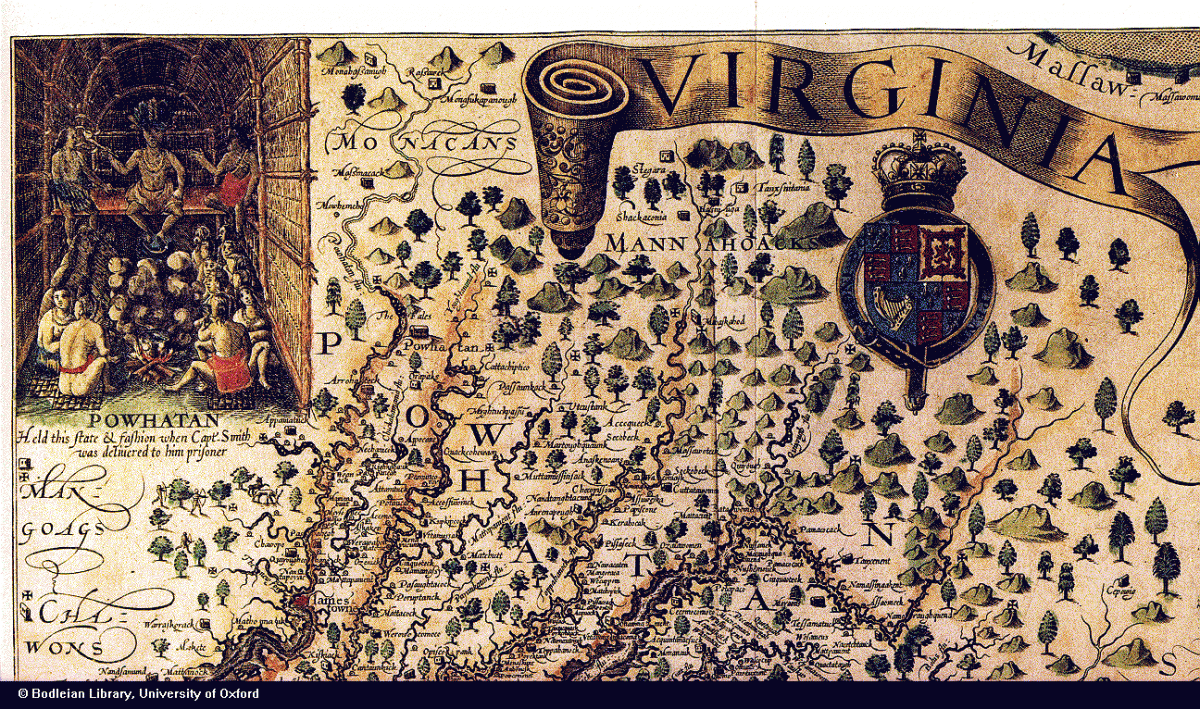Later Arrivals

After the German settlers known as the First Colony and the Second Colony were in Virginia, other German immigrants arrived in the same general area. GRG will be adding more material on these later settlers and in the meantime we are pleased that John Blankenbaker has given permission to share with you his fascinating article on some of these later arrivals who survived great hardship just to make it to Virginia.
The Last Voyage of the Oliver
by Klaus Wust and John Blankenbaker
 The literature on European emigration of the eighteenth century is filled with horror stories of sufferings and death. Notwithstanding the heart-rending images of unsuccessful voyages, the total German and Swiss migration to America during the eighteenth century reveals a surprisingly successful operation in which more than one hundred thousand souls arrived safely on the shores of the New World. These travelers overcame much, including the lack of funds to pay for their ocean passage.
The literature on European emigration of the eighteenth century is filled with horror stories of sufferings and death. Notwithstanding the heart-rending images of unsuccessful voyages, the total German and Swiss migration to America during the eighteenth century reveals a surprisingly successful operation in which more than one hundred thousand souls arrived safely on the shores of the New World. These travelers overcame much, including the lack of funds to pay for their ocean passage.
Death and suffering stalked the travelers like unshakeable companions but still they came. Travel conditions on the small ships could ony be described as filthy and stench-filled. Lack of proper hygiene in crowded quarters led to illness and often death. One year, 1738, was so extreme in its devastating effects that it earned the reputation as the Year of the Destroying Angels (see Psalm 78, verse 49). The events of 1738 were so horrible that the fatalist mind searched for answers.
A contributing factor to the increasing number of calamities in 1738 was the significant increase in passenger traffic compared to previous years, especially from Rotterdam and Amsterdam. In 1738 the number of people seeking trans-Atlantic passage quadrupled from the 1737 number. There were simply not enough ships adequately prepared for the approximately 6,000 passengers. While waiting for a ship to carry them across the seas, the passengers lived in crowded camps with unhealthy conditions which inevitably left them in a weakened state when it was time for them to make the arduous journey.
Most of the ships were destined for Philadelphia which is where the majority of the passengers wished to go. There was one ship, the Oliver, which had been chartered to take many Swiss travelers to Virginia to settle on lands that William Byrd wished to develop. There was another group of about fifty Germans from the vicinity of Freudenberg in Nassau-Siegen who also wished to go Virginia. This group of Germans was acquainted with the First Colony of Germanna settlers who had been recruiting people in Germany to come join them in Virginia.
The greed of the operators of the Oliver, and the anxiousness of the Freudenberg people to start their journey, resulted in the Oliver taking on these extra passengers even though the ship was already overloaded before adding the Freudenbergers. This circumstance was to have horrific consequences. Two of every three people who boarded the Oliver in Rotterdam met with death without ever reaching their goal of establishing a new home in America.
The Oliver was a bilander (“by land”), a name which described its usual sailing courses along the coastal waters. Bilanders were usually less than one hundred tons displacement. Sometimes, this type of ship was used in trans-oceanic traffic but its nature made it less than ideal for such a voyage. Exacerbating the already bad conditions were numerous delays in the start of the passage which only served to further exhaust the supplies and contributed to more illness among the passengers. In 1738, as the Oliver set sail, it was overloaded and unable to carry enough food and water for those on board.
Imagine the passengers' sense of relief and excitement when, on June 22, 1738, five ships, including the Oliver, finally set sail from Rotterdam. The voyage was at last underway. Next, imagine how the passengers must have felt when, once at sea, the captain of the Oliver, feeling that the ship was dangerously overloaded, returned to port. Another delay ensued while the owners assigned a new captain. After this disappointing delay, the Oliver left Rotterdam again in early July and crossed quickly to Cowes, on the Isle of Wight, where it spent another frustrating six weeks in port. Finally, the Oliver left Cowes only to be quickly met by raging seas which forced the Oliver to take refuge in Plymouth harbor.
After another long delay at Plymouth, the Oliver set its course for Virginia in early September, 1738. The Oliver was, at last, on the open Atlantic bound for America. The Oliver's troubles were not over. Another ship which had met the Oliver at sea reported on the Oliver's condition as follows: “they had lost the Captain, Mate, and 50 or 60 passengers, most of them children, who dy’d; and that they were in great Distress for want of Provisions, occasion’d by the Tediousness of their Voyage.”
By winter, without any further news from the Oliver, it was feared the ship had been lost at sea. Such was not the case as the ship caught the glorious sight of the Virginia coast early in January, 1739. At the mouth of the James River, the Oliver anchored in Lynnhaven Bay waiting for favorable winds and tides. The passengers, nearly crazed from hunger and thirst, forced the captain with several of the crew members and some passengers in a small boat to seek water and food from an island. No relief could be found on the island. While the search was underway, a storm came up making it impossible for the seamen to return to the Oliver.
The Oliver dragged its anchor and leaks developed when it scraped along the bottom with sea water rushing in to fill the hold. Many of the passengers were trapped below deck and drowned. The weather turned very cold and soon freezing temperatures were adding to the death toll. The party that had gone to seek supplies on the island could not return because the waters were too rough. Some other ships which were anchored near the Oliver tried to rescue the passengers but there proved to be little effective assistance they could offer to this ill-fated ship.
The people who had left from the Freudenberg area were recorded in the church book there. While we can not be sure that all of these people actually did board the Oliver, we can take the list as a good approximation. These fifty-odd people were:
From Freudenberg:
Tillmanus Seelbach, his wife Anna Beata, son-in-law, and daughter;
Gerlach Waffenschmidt, his wife Anna Maria with four children;
Henrich Emstorf, his wife Anna Catharin and three children;
*Her[mann] Bach and his wife Anna Margreth with one child;
*Joh[ann] Fredrich Müller and his wife Anna Maria with one child;
*Hymenäus Creutz and his wife Elisabeth, [became Crites/Critz in Virginia];
*George Weidman, single, [became Wayman in Virginia];
Tillmanus Steinseiffer, single;
*Johannes Hoffman from Dirlenbach, single;
Johann Henrich Schmidt, single;
Johannes Klappert, single;
Tillmany Gudelius, single;
*Hermanaus Müller, single;
From Plittershagen:
Johannes Halm, his wife Anna Cath[a]rin with two children;
From Boeschen:
*(?)Johann Henrich Schneider, his wife wife Maria Catharin, and two children;
Johann Georg Hirnschal, his wife Anna Catharin, with one child, and his father;
From Anstoss:
Henrich Schneider, his wife Anna Margreth, with two children;
Hanna Schneider, her son Johannes, and Johanne’s wife and four children.
The men above, whose names are preceded by asterisks, actually left a record in Virginia so obviously they were among the survivors. The wives are uncertain since the original wife might have died during the passage and the husband might have remarried a woman of the same given name in Virginia. This highlights a genealogical research problem which is that even though there are written marriage records in Germany that seem to match the names in Virgina, this is not proof that the wife named in the German record is the same person who was the mother of the children born in Virginia. This conclusion is more easily understood in this extreme case of the Oliver and its devastated numbers, but it also true wherever the documentation of a marriage is sketchy. Genealogy is often a matter of probabilities and we can not be certain of many of conclusions we necessarily infer from the available evidence.
While there is no direct proof that the Freudenberg people did book passage on the Oliver there is very strong circumstantial evidence that they did. The destination of the ship matched the known destination of the Freudenberg group. There were no other ships that left for Virginia that year. There is no record of any of the Freudenberg people in any colony other than Virginia. The fact that so many of the people are missing is consistent and explainable by the high fatality rate on the Oliver.
Perhaps one of the most impressive pieces of evidence is the testimony recorded by the Moravian missionaries, Schell and Hussey, in 1743 when they made a visit to the Germantown area in Virginia in 1743. They report that one man recounted to them how, “he had had a dangerous sea voyage, for 150 of the passengers were drowned at one time.” Allowing for confusion between drowning, starvation, freezing and sickness, the numbers of the Oliver match closely.
Noted historian Klaus Wust estimated that two thousand people died in port and on board the many ships destined to set sail in 1738. Out of six thousand only four thousand people arrived safely in America. Thus, in the year 1738, the loss of life on all trans-Atlantic ships amounted to one in three. Of those who took passage on the Oliver, two in three lost their lives. In 1738, bad weather, lack of adequate preparation for the large numbers of people, and the early arrival of the emigrants at the departure ports combined to deadly effect. Add to those factors the ever present greed of the ship owners leading to dangerous overcrowding on the ships and a recipe for disaster is plainly written.
For the survivors of the star-crossed ship Oliver, they started a new life in Virginia overcoming great odds. If you count an ancestor among this group, perhaps you can better appreciate the amazing history that oft goes unnoticed with those who came before us.
____________
Note: The lead author on this story was the late Klaus Wust. Several articles pertaining to the year 1738 appeared in several issues of volume 10 of Beyond Germanna.
Also, the image at the beginning of the article is an actual photograph of the Oliver. Okay, that's not true, but it is a drawing of a typical bilander class of ship like the Oliver.

